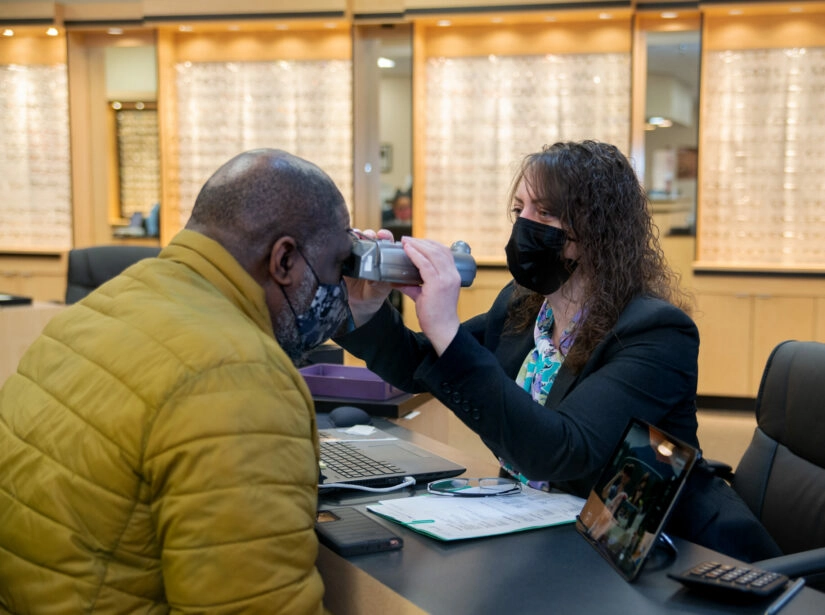Retinal Tears and Detachments
The retina is the thin, light-sensitive tissue located at the back of the eye that is responsible for receiving light and sending images to the brain. When damaged, it can lead to significantly worsened quality of vision or loss of vision entirely.
Overview
What are retinal tears and detachments?
Retinal tears refer to small rips in the retinal tissue that separate portions of the retina from the back of the eye. Retinal detachment occurs when the whole retina is pulled away from its correct position at the back of the eye. These damages prevent the retina from receiving light, thus leading to blindness.
What are the different types of retinal detachments?
There are three different types of retinal detachments: rhegmatogenous, tractional, and exudative.
Rhegmatogenous
- Rhegmatogenous (reg-ma-TODGE-uh-nus) detachments are the most common. They occur when a hole or tear in the retina allows fluid to pass through and collect underneath the retina, pulling the retina away from underlying tissues. The areas where the retina detaches lose their blood supply and thus stop working, causing vision loss.
Tractional
- Tractional detachment can occur when scar tissue grows on the surface of the retina, causing it to be pulled away from the back of the eye.
Exudative
- Exudative detachment is when fluid accumulates beneath the retina but there are no tears or holes present.
When to call the doctor
If you suspect you have retinal tears or detachment, it’s critical that you make an appointment with an eye doctor right away. The longer retinal tears or detachment goes untreated, the greater your risk of permanent vision loss in the affected eye.
Symptoms & Risk Factors
What are the symptoms of retinal tears and detachments?
- The sudden appearance of many floaters (tiny specks that seem to drift through your field of vision) or black spots (this can appear as if someone is shaking pepper in front of your eye)
- Flashes of light in one or both eyes (photopsia)
- Blurred vision
- Gradually reduced side (peripheral) vision
- A curtain-like shadow over your visual field
What are the risk factors for retinal tears and detachments?
The following risk factors are not required to develop a retinal tear, but they make the likelihood greater.
- Advanced age—retinal detachment is more common in people over age 50
- Extreme degree of myopia (nearsightedness)
- Severe eye trauma
- Family history of retinal tears or detachment
- Prior eye surgery
- Previous other eye disease or disorders, including retinoschisis, uveitis or lattice degeneration (thinning of the peripheral retina)
Diagnosis
How are retinal tears and detachments diagnosed?
The principal way doctors diagnose retinal tears and detachments is through a thorough and timely dilated examination of the eye. During the examination, the eye doctor will apply slight pressure to the eye and/or a three-mirror lens to take a look at the retina. In cases where the retina is obscured, an ultrasound may be required to aid in diagnosis.

Treatment & Prevention
How are retinal tears and detachments treated?
Because retinal tears and retinal detachments vary in severity, the treatments are different.
Retinal Tears
Retinal Detachments
How can I prevent retinal tears or detachment?
Most cases of retinal detachment are related to aging and related vitreous detachment, making them hard to prevent or predict. However, having regular routine eye examinations can help to detect any changes in your eyes that you might not notice, such as thinning or inflammation. Other steps you can take to prevent retinal damage include:
- Seeing your eye doctor immediately if you develop floaters, see flashing lights, or notice any other changes to your vision
- Getting your eyes checked regularly—and more often if you have conditions that make detachment more likely, such as diabetes or myopia
- Keep diabetes or high blood pressure under control in order to keep the blood vessels in your retina healthy
- Wear eye protection for sports or work if you need it—try sports goggles if you play sports that could harm your eyes like racquetball, or wear special glasses if you work with certain chemicals, machines, or tools.